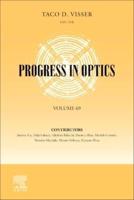Publisher's Synopsis
The electron is a subatomic particle, symbol e-, with a negative elementary electric charge. Electrons belong to the first generation ofthe lepton particle family, and are generally thought to be elementary particles because they have no known components or substructure. Theelectron has a mass that is approximately 1/1836 that of the proton.Like all matter, electrons have properties of both particles and waves, and so can collide with other particles and can be diffracted like light. The wave properties of electrons are easier to observe with experiments unlike those of other particles like neutrons and protons because electrons have a lower mass and hence a higher De Broglie wavelength for typical energies.Many physical phenomena involve electrons in an essential role, such as electricity, magnetism, and thermal conductivity, and they also participatein gravitational, electromagnetic and weak interactions.Electrons have many applications, including electronics, welding, cathode ray tubes, electron microscopes, radiation therapy, lasers, gaseousionization detectors and particle accelerators.Interactions involving electrons and other subatomic particles are of interest in fields such as chemistry and nuclear physics.This book gives an excellent up-to-date background regarding the essence of the electron and is designed to be a general overview of the topic and provide you with the structured knowledge to familiarize yourself with the topic at the most affordable price possible. The level of discussion is that of Wikipedia. The accuracy and knowledge is of an international viewpoint as the edited articles represent the inputs of many knowledgeable individuals and some of the most currently available general knowledge on the topic, based on the date of publication.









